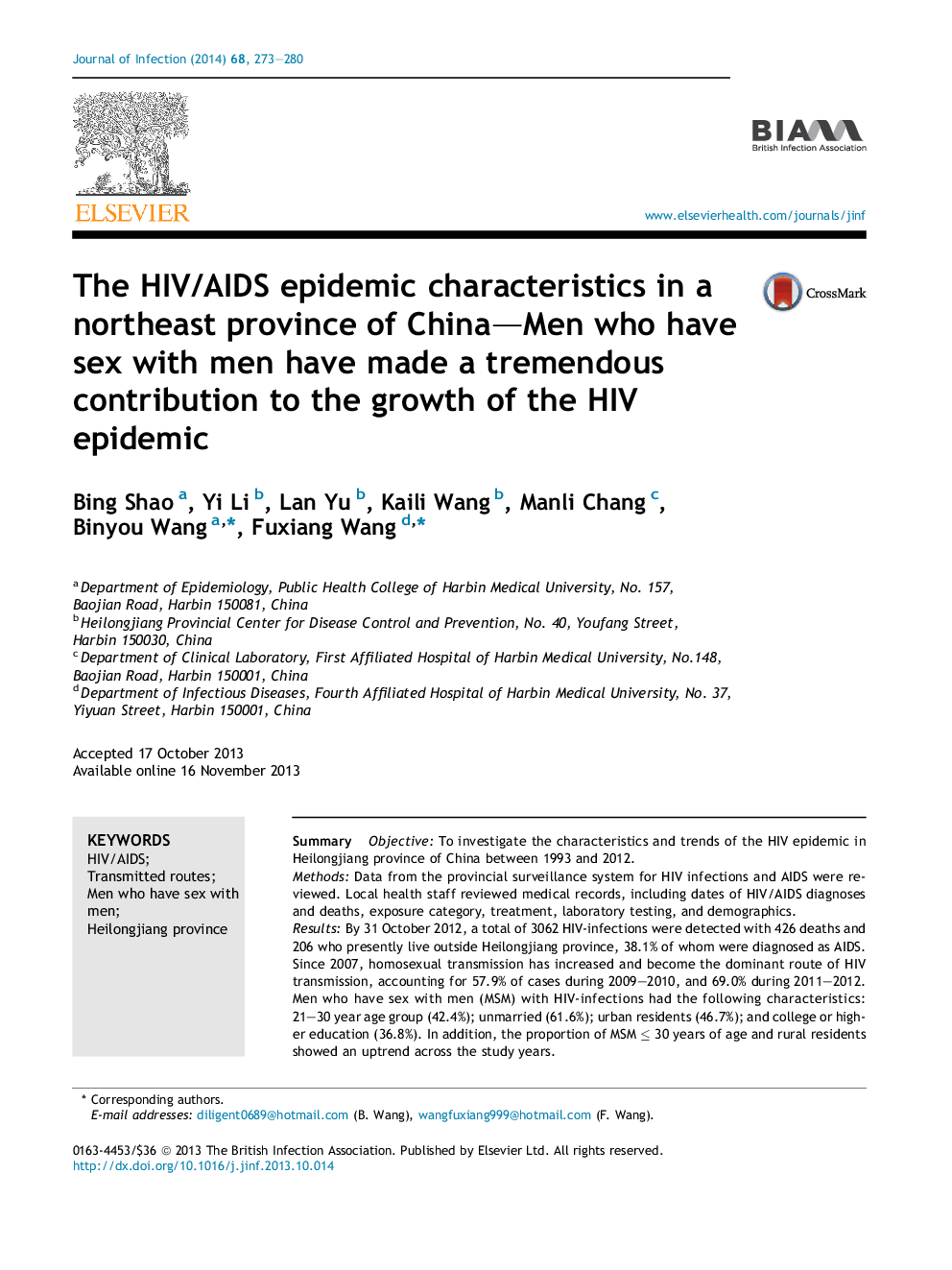| Article ID | Journal | Published Year | Pages | File Type |
|---|---|---|---|---|
| 3374813 | Journal of Infection | 2014 | 8 Pages |
SummaryObjectiveTo investigate the characteristics and trends of the HIV epidemic in Heilongjiang province of China between 1993 and 2012.MethodsData from the provincial surveillance system for HIV infections and AIDS were reviewed. Local health staff reviewed medical records, including dates of HIV/AIDS diagnoses and deaths, exposure category, treatment, laboratory testing, and demographics.ResultsBy 31 October 2012, a total of 3062 HIV-infections were detected with 426 deaths and 206 who presently live outside Heilongjiang province, 38.1% of whom were diagnosed as AIDS. Since 2007, homosexual transmission has increased and become the dominant route of HIV transmission, accounting for 57.9% of cases during 2009–2010, and 69.0% during 2011–2012. Men who have sex with men (MSM) with HIV-infections had the following characteristics: 21–30 year age group (42.4%); unmarried (61.6%); urban residents (46.7%); and college or higher education (36.8%). In addition, the proportion of MSM ≤ 30 years of age and rural residents showed an uptrend across the study years.ConclusionsThe HIV/AIDS epidemic has continued to increase in Heilongjiang province, and has shown an explosive growth since 2008, with MSM making a tremendous contribution to the HIV outbreak. Homosexual contact has become the dominant route of HIV transmission. Urgent intervention is needed to recognize this target population, especially those ≤30 years of age, unmarried, and urban residents.
